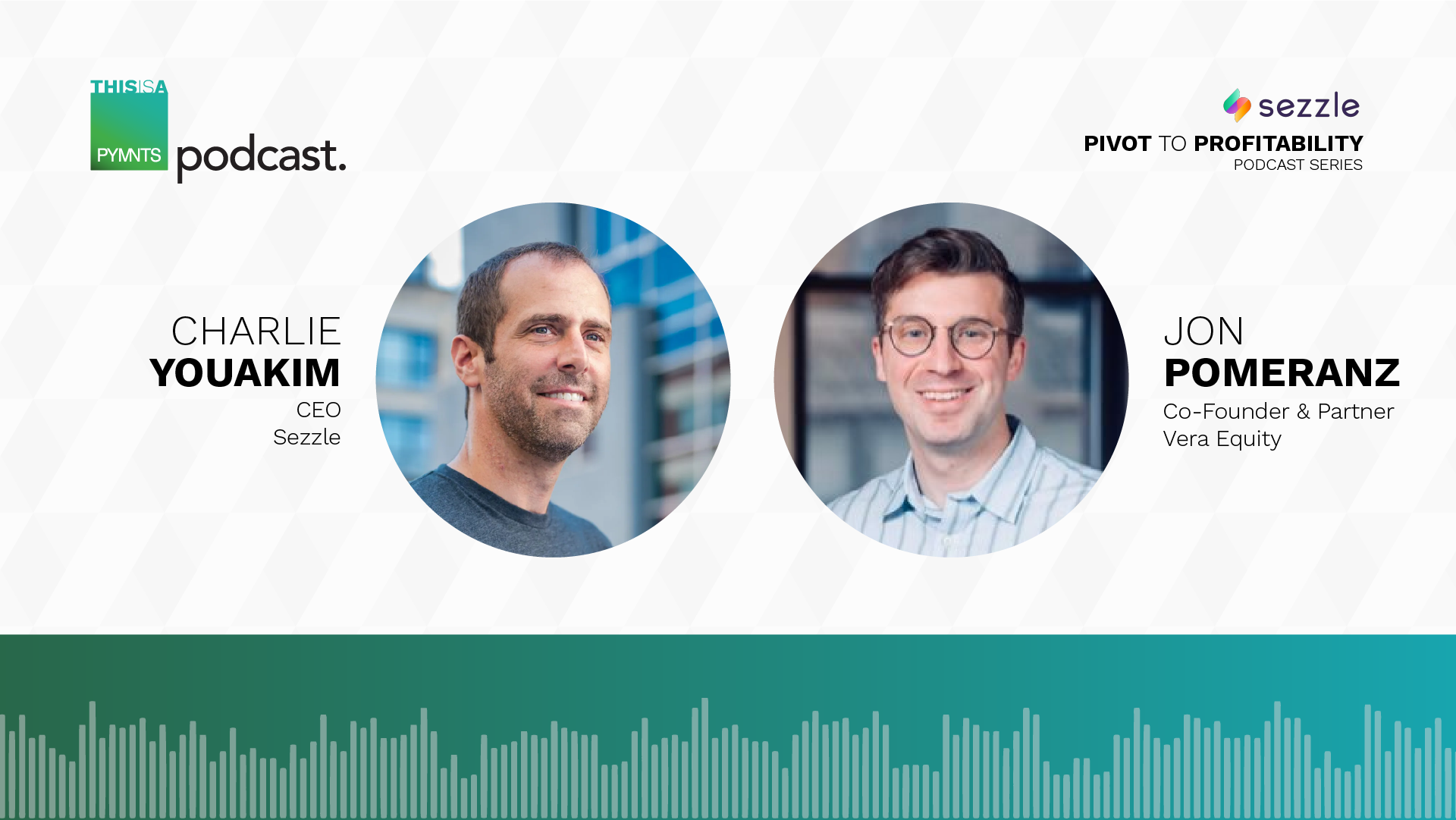Why FinTechs Should Never Stop Climbing the ‘Profit Hill’
We’re a long way from the halcyon days of FinTech funding just a few years ago.
Sezzle CEO Charlie Youakim and Vera Equity Co-founder Jon Pomeranz told PYMNTS Karen Webster that in the current environment marked by higher costs of capital and nascent firms that flame out before promise turns to reality, a shift is in the works, and it’s a necessary one.
That’s especially true for the digital upstarts hoping to make their mark in payments — disrupting commerce in general and, perhaps, payments in particular.
“These transactional business models were trading at double digits, and now they’re trading at single digits,” Pomeranz said.
Things are changing — and much will change in the months and years ahead, he said. For the moment, there’s a wait-and-see approach on both sides of the equation, between the would-be targets and the would-be targeters.
The companies that were given a ton of capital have lowered their cash burn rates and are focusing on sparking or maintaining growth, he said. And the investors with the capital in hand are kicking the tires a bit more deliberately before pulling the trigger and striking deals. Both sides are looking to see valuations rise, which would spur FinTechs to consider a sale as an exit strategy; the venture capitals (VCs) want to see multiple ascend at least a bit so that they can start to feel more sanguine about getting returns on their investments.
The Times Are Changing
Pomeranz was quick to note that he is bullish on FinTech’s long-term potential, and there is still significant greenfield opportunity to innovate within financial services. Smart decision-making about where to deploy capital means that a measured, roots-based approach is optimal.
As Youakim said, with a nod to what’s changing: “We’re going back to the fundamentals — everywhere.”
Sezzle, for its part as a publicly traded company, and with its eye on potential takeout candidates, has been focused on EBITDA (a rough measure of cash flow). For at least some of those startups that might catch Sezzle’s eye, some of those founders, he said a bit tongue in cheek, “they think they’re worth more than us.”
The result for Sezzle, which is profitable, is that in the build-versus-buy debate, building out new functionalities winds up winning. That’s unfortunate for some of the startups because an exit path is effectively closed, he said. For struggling companies that have good products and services but are grappling with cash flow, the hopes of a sale to keep the company extant just won’t bear fruit.
“The younger founders have said, ‘Well, if I don’t grow, what’s my multiple going to be?’” he said. “And my position is that if you don’t make any money, it does not matter what your multiple is.”
The shift is palpable, where the founders who were used to growth at all costs, looking for the next funding round, are now giving way to new CEOs who are focusing on operating income. According to Youakim, returning to the fundamentals of a balance between growth and profitability will help bring buyouts back into focus. We’re seeing a convergence of sorts, where VC investors have been focused on top lines, and private equity (PE) investors have been focused on EBITDA.
In the current environment, Vera has become adept at forging discussions with startups that focus on profitability alongside capital raising, Pomeranz said. Every dollar committed by Vera, for example, has risk attached because profits and growth rates determine whether returns can help give a tailwind to subsequent financing rounds.
“We’re encouraging a lot of firms to raise less capital and get to the targets that they think they need to get to, whether it’s revenues or even data, so that investors can look at client retention or other metrics to get to the next round of financing,” he said.
Asked by Webster what areas remain in focus, Pomeranz said an open-minded approach has been driving Vera, but cryptocurrency is a category that remains hard to gauge in terms of concrete opportunities. Direct-to-consumer (D2C) remains an area of promise.
In a world where artificial intelligence (AI) is seemingly attached to every name and every startup out there, Pomeranz said that “as you continue to look at these categories, it’s going be really important that you really get a sense of what are they doing that’s different.”
In terms of general strategy, Youakim and Pomeranz stressed that there needs to be a collaboration between boards, investors, CEOs, founders and investment firms.
“I’m an optimist,” Pomeranz told Webster. “Not everybody’s going to have a massive IPO, a huge home run … 90% of businesses fail. So, if you’re in the 10% that doesn’t fail and has a great outcome, that’s a win for everybody involved.”
